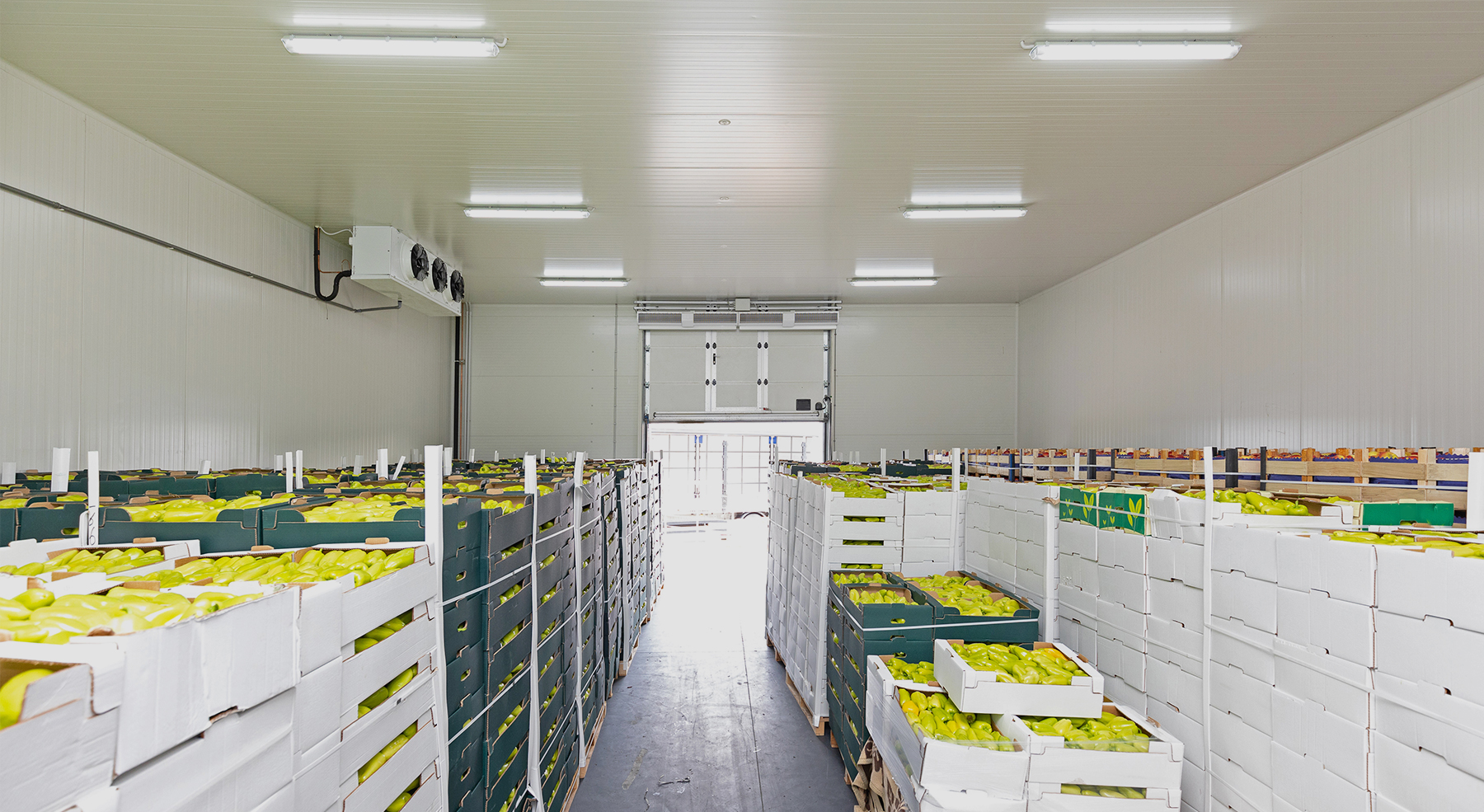
As we sit on the heels of the pandemic, we can look back and see how changing consumer buying habits influenced supply chains and vice versa. Now, with costs rising and inflation playing a leading role in financial decision-making in both homes and businesses across the country, it’s likely that we’ll see shifts in buying habits and therefore changing supply chain strategies again. The evolution will continue as cold food companies evolve and adjust to make their business models fit into the new, new normal. So how will that affect cold food warehousing?
1. Shifting Supply Chain Strategies to Match Changing Consumer Behaviors
The pandemic changed the way consumers shop, with more and more business conducted online, even in the grocery business. Many companies made a quick pivot to offer or increase online shopping and pickup/delivery options.
As it has become clear that consumer habits like online shopping and ordering groceries for delivery are here to stay, companies are looking for ways to make those options more sustainable, turning to micro-fulfillment and other alternative distribution methods that don’t involve a shopper on a grocery store floor.
Supply chain challenges have also shaped the cold chain. Take the growing US lamb market for example. The market growth has a lot to do with exports from New Zealand and Australia, with about half of the available supply coming from those two countries. Supply chain challenges during the pandemic made it difficult to get fresh lamb into the country within the necessary timeframe, which fueled a market for frozen lamb and drove domestic lamb prices up. Consumer buying habits have adjusted, with consumers tending to favor more affordable frozen lamb.
2. B2B Distributors Offering Products Direct to Consumers
During the pandemic when restaurants were not operating and therefore not ordering, many foodservice distributors pivoted their business model to keep the lights on. They began selling directly to consumers, and those distributors that had the right technology in place to support this new style of operations have been successful in expanding their B2C businesses.
Now, some of these distributors are in the B2C game for the long haul. They’re perfecting their strategies to provide quality products direct to consumers in a manner that is profitable and sustainable. These companies have found that with the right warehouse technology (like cold storage warehouse management systems) and shipping methods they can effectively serve the end consumer.
3. Demand for More Cold Storage Capacity to Accommodate Industry Growth
The supply chain challenges that have caused companies to turn to more frozen foods to provide customers with quality products have also driven the need for more frozen storage. Companies are scrambling to keep up with the need for cold food warehouse space.
We’re seeing more cold storage facilities go up, even in urban areas where smaller footprints, including high-rise facilities, are necessary due to space constraints.
Additionally, many companies are turning to 3PLs to store product and sometimes handle order fulfillment. We’ll likely see even more construction and 3PL use as the frozen industry continues to expand.
4. Enhanced Sustainability Efforts
As energy prices (and all the other prices, for that matter) rise, and more cold food warehousing becomes necessary, more and more companies are likely to enact or accelerate sustainability efforts, particularly solar since cold storage requires massive amounts of electricity.
More cold storage companies are including solar in their plans as they build new warehouses, rather than adding solar as an afterthought. We can expect to see companies ramping up sustainability efforts to save on energy costs while prioritizing corporate responsibility and benefiting from improved consumer perceptions.
These efforts are recognized and appreciated by consumers. In fact, a recent study from Simon-Kucher & Partners found that 85% of consumers have shifted purchasing decisions towards being more sustainable.
5. Enhanced Work Conditions Through Technology, Robotics, and Automation
The labor market is tough right now. Companies have tried everything to try to bring in new workers and many are still struggling. We can expect to see companies going above and beyond incentives and benefits packages. Technology, robotics, and automation are the future key to warehouse labor recruitment.
Since competitive wages won’t do the trick when all your competitors are hiring at a similar pay rate, using technology to draw in associates may become the new norm. Think of it this way: would workers rather go to work in a dark, dirty warehouse where they sweat and toil all day, or would they rather work in a bright, futuristic environment where robots handle the heavy lifting?
6. Need for Increased Visibility
The supply chain challenges we’re facing and the increased number of distributors offering product direct to consumers have both created an urgent need for even more visibility across the cold food supply chain.
Visibility is important for sales teams so they know what they have to sell and aren’t offering product to a customer that they don’t actually have due to supply chain challenges. For companies who are now selling direct to the consumer, real-time inventory data can be used to ensure they’re not selling a product they don’t have. Technology is the key to ensuring that inventory data gets from the warehouse into the back end of the e-commerce website.
As an example of the need for increased visibility, we can look back at the lamb market. With most of the product coming in frozen and very little fresh product coming in, end-to-end visibility is critical to tracking high-value fresh deliveries and getting them into the warehouse so they can be sold. Visibility is also a key part of ensuring frozen product stays at temperature through the entire supply chain and into the hands of the end consumer.
As the old saying goes, “the only constant is change.” Cold food distributors who are prepared to adapt and shift to changing industry demands will be the best prepared for success and profitability in the long run.
Dan Waters, Vice President of Sales, Made4et
Dan has over 30 years of experience in warehouse operations and supply chain technology, including 17 years in food distribution. Dan is widely recognized for his industry expertise, and for his rare blend of both operations and IT experience. Working with companies to solve their supply chain challenges, Dan bridges the gap between the operations and IT teams to find common ground and the right solutions. Dan is VP of Sales for Made4net, warehouse management systems and supply chain platform provider with over 600 global customers.
If you’re exploring WMS solutions, check out this guide to selecting a cold storage WMS. You may also like our tips on how to optimize your cold storage warehouse management system.


